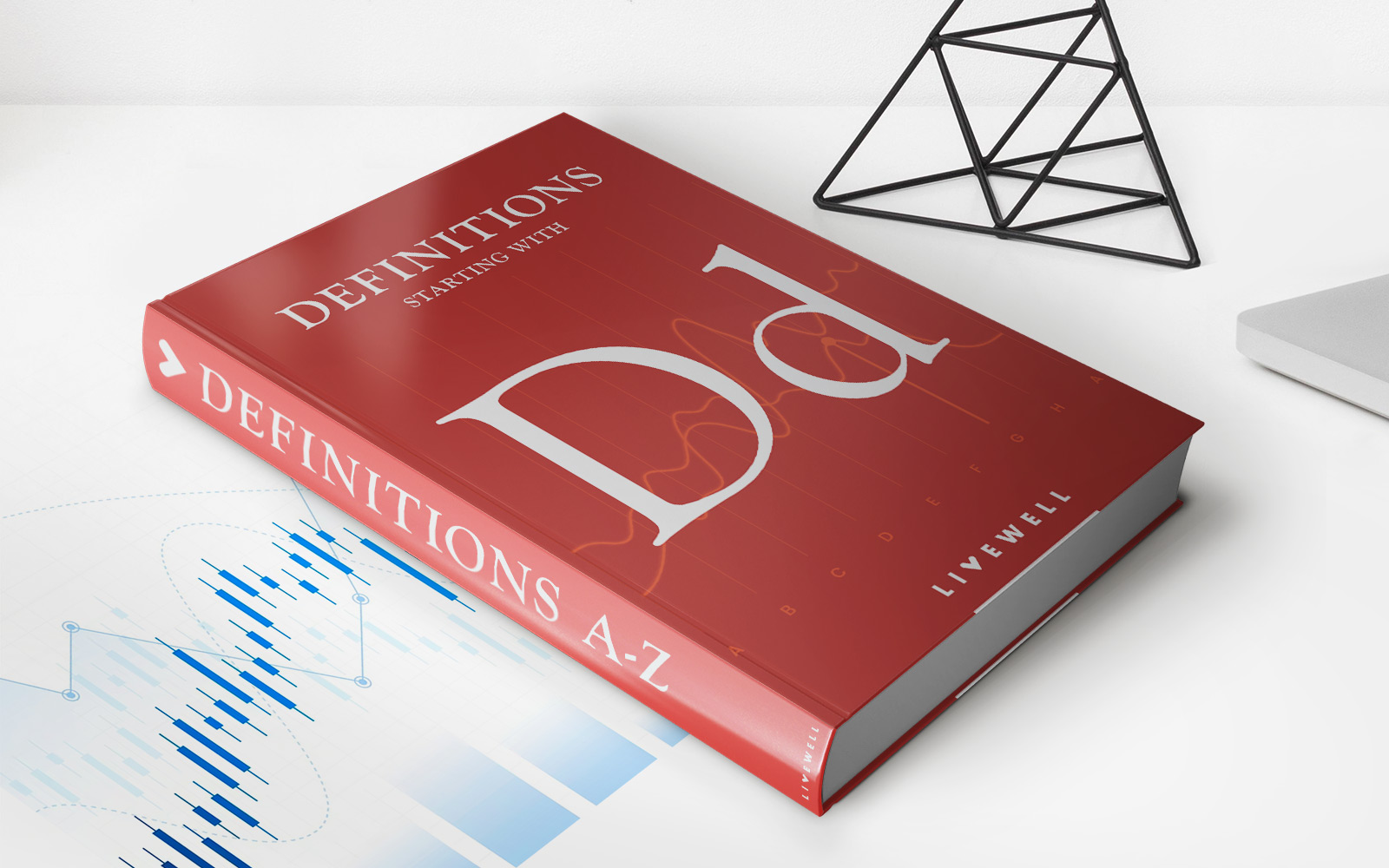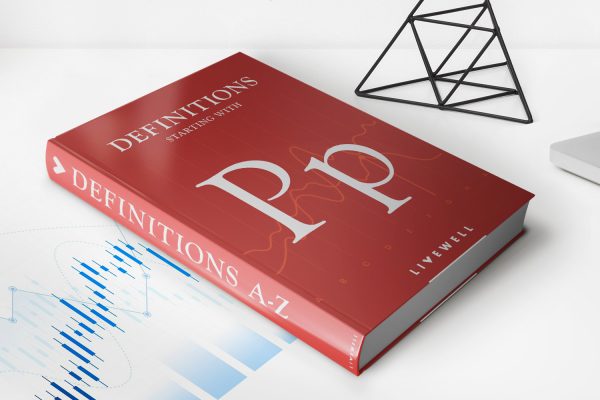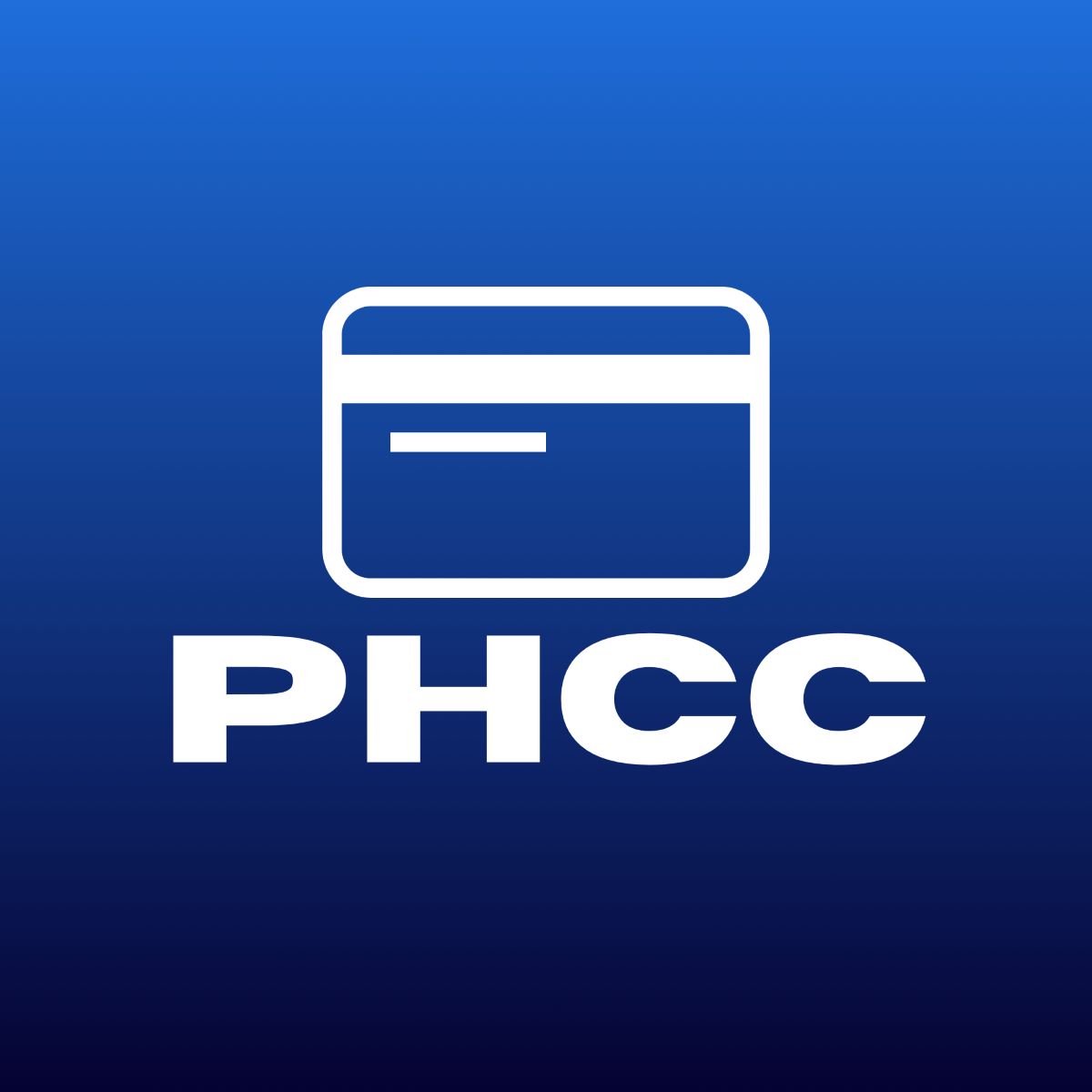

Finance
What Student Loans Should I Pay Off First
Published: January 20, 2024
Discover the best strategy for paying off student loans. Learn which loans to prioritize and how to optimize your finances.
(Many of the links in this article redirect to a specific reviewed product. Your purchase of these products through affiliate links helps to generate commission for LiveWell, at no extra cost. Learn more)
Table of Contents
Introduction
Student loans have become a common financial burden for many individuals pursuing higher education. With the rising cost of tuition fees, it is not surprising that so many individuals find themselves saddled with student loan debt after graduation. One of the most important steps in managing student loans is determining which loans to prioritize when it comes to repayment.
When it comes to paying off student loans, there is no one-size-fits-all approach. The right strategy for you will depend on various factors, such as interest rates, loan types, repayment terms, financial goals, and loan balances. By carefully considering these factors, you can make an informed decision on which student loans to pay off first.
In this article, we will explore the factors you should consider when deciding which student loans to prioritize. We will also discuss different strategies you can employ to pay off your student loans efficiently and effectively.
By the end of this article, you will have a better understanding of how to manage your student loan debt and make progress towards financial freedom.
Factors to Consider
When determining which student loans to pay off first, it’s important to take into account several key factors:
- Interest Rates: One of the most crucial factors to consider is the interest rate on each loan. Typically, student loans come with different interest rates, ranging from low to high. Higher interest rates can cost you more in the long run, so it makes sense to prioritize loans with higher rates to minimize the overall interest paid.
- Loan Type: Different types of student loans may have varying terms and conditions. For example, federal loans often come with more flexible repayment options and potential forgiveness programs. Private loans, on the other hand, may have stricter repayment terms. Understand the terms and benefits of each loan type to determine which should be paid off first.
- Repayment Terms: The length of your loan repayment term can also impact your prioritization. Loans with shorter repayment periods may require higher monthly payments but will help you pay off the debt faster. Longer repayment terms may offer smaller monthly payments but can result in paying more interest over time.
- Financial Goals: Consider your overall financial goals when prioritizing student loans. If you have other debts or financial priorities, such as saving for retirement or a down payment on a house, you may need to allocate more resources towards those goals. Balancing your student loan repayment with other financial objectives is crucial.
- Loan Balance: Take into account the balance of each loan. While interest rates and terms are important, it can also be satisfying to pay off smaller balances quickly. This can provide a sense of accomplishment and motivation to continue making progress on your student loan repayment journey.
By carefully evaluating these factors, you can create a prioritization plan that aligns with your financial situation and goals. Next, let’s explore several strategies that can help you effectively pay off your student loans.
Interest Rates
Interest rates play a significant role in determining which student loans to prioritize for repayment. Essentially, you want to focus on paying off loans with higher interest rates first, as they will accrue more interest over time, resulting in a higher overall repayment amount. By tackling loans with higher interest rates, you can save money in the long run and pay off your debt more efficiently.
Start by reviewing the interest rates on all your student loans. Sort them from highest to lowest, and consider focusing on the loans with the highest rates. These loans are likely to have the biggest impact on your overall repayment strategy.
One popular method for paying off student loans based on interest rates is the “Avalanche Method.” With this approach, you make minimum payments on all loans and allocate extra funds towards the loan with the highest interest rate. Once that loan is paid off, you move on to the loan with the next highest interest rate, and so on. This method allows you to save the most money on interest payments over time.
However, it’s worth noting that everyone’s financial situation is different. In some cases, individuals may prefer the “Snowball Method,” which involves paying off loans with the smallest balances first, regardless of interest rates. This approach can provide a sense of accomplishment and motivation as you quickly eliminate individual loans, even if it means paying slightly more in interest overall.
Consider your own preferences and financial goals when deciding which method to apply. Remember, the ultimate aim is to pay off your student loans efficiently while staying motivated throughout the process.
By prioritizing loans with higher interest rates, you can save money on interest payments and make significant progress in paying off your student loan debt. However, keep in mind that other factors, such as loan type and repayment terms, should also be considered in your overall repayment strategy.
Loan Type
When deciding which student loans to pay off first, considering the loan type is essential. Student loans can be broadly categorized into federal loans and private loans, each with its own set of terms and conditions.
Federal Loans: Federal student loans are offered by the government and often come with more flexibility in repayment options. These loans may offer income-driven repayment plans, loan forgiveness programs, and deferment or forbearance options. If you have federal loans, it is important to review the benefits and protections they provide before prioritizing repayment. In some cases, it may be advantageous to focus on paying off private loans with potentially higher interest rates or less favorable terms first.
Private Loans: Private student loans are provided by banks, credit unions, or other lending institutions. These loans often have less flexible repayment options and fewer borrower protections compared to federal loans. Due to their often higher interest rates, it may be wise to prioritize paying off private loans first to minimize the amount of interest paid over time. Be sure to review the terms and conditions of your private loans to determine the best approach.
It’s important to note that if you have multiple loans of the same type, you should consider the specific terms and interest rates of each individual loan within that category. This way, you can prioritize the loans with the highest interest rates or the least favorable terms, regardless of whether they are federal or private loans.
Additionally, if you have a mix of federal and private loans, you may need to carefully weigh the benefits and protections of federal loans against the potentially higher interest rates of private loans. In some cases, it may make sense to focus on paying off private loans first, while still taking advantage of the benefits offered by federal loans.
Remember, the goal is to strategically manage your student loan payments to reduce overall debt and minimize interest paid. By considering the loan type and its associated terms, you can make informed decisions on which loans to prioritize for repayment.
Repayment Terms
Another crucial factor to consider when prioritizing student loans is the repayment terms associated with each loan. Repayment terms refer to the length of time you have to repay the loan and the frequency of payments.
Loans with shorter repayment terms typically require higher monthly payments but allow you to pay off the debt faster. On the other hand, loans with longer repayment terms may have lower monthly payments, but you’ll end up paying more in interest over the life of the loan.
When deciding which loans to pay off first, it’s generally advisable to focus on loans with shorter repayment terms. By tackling those loans, you’ll be able to eliminate them more quickly, reducing the overall number of loans in your portfolio and potentially freeing up more funds for other financial goals.
However, there may be cases where you need to prioritize loans with longer repayment terms due to cash flow reasons. If you’re struggling to make higher monthly payments on loans with shorter terms, it might be more feasible to target loans with longer repayment terms first.
Additionally, be aware of any specific repayment terms that may impact your prioritization strategy. For example, some loans may have fixed interest rates, while others have variable rates that could increase over time. Loans with variable rates may be worth prioritizing to avoid potential future interest rate hikes.
Remember to thoroughly understand the repayment terms of each loan and consider how they align with your financial situation and goals. By focusing on loans with shorter repayment terms, you can accelerate your progress in paying off your student loans while minimizing the interest paid.
Financial Goals
When deciding which student loans to pay off first, it’s important to consider your overall financial goals. While eliminating debt should be a priority, it’s essential to balance your student loan repayment with other financial objectives you may have.
Take some time to evaluate your short-term and long-term financial goals. Are you looking to save for a down payment on a house, build an emergency fund, or invest for retirement? Assessing these goals will help you determine how much money you can allocate towards your student loans.
If you have other high-interest debts, such as credit card debt or personal loans, it may make more sense to prioritize paying those off before focusing on your student loans. High-interest debts can be more detrimental to your overall financial health, so paying them off first can save you more money in the long run.
On the other hand, if you have a stable financial situation, a solid emergency fund, and are already contributing to your retirement savings, you may choose to allocate more funds towards your student loan repayment. Paying off your student loans sooner can provide relief and allow you to redirect those funds towards other financial goals.
It’s crucial to strike a balance between aggressively paying off your student loans and setting yourself up for long-term financial success. Consider working with a financial advisor to help you navigate your financial goals and create a roadmap to prioritize your student loan repayment in the broader context of your financial picture.
Remember, financial goals can vary from person to person. Take some time to reflect on your own priorities and make informed decisions when it comes to allocating your resources towards student loan repayment and other financial objectives.
Loan Balance
When determining which student loans to pay off first, it’s important to take into account the balance of each loan. While interest rates and repayment terms are important considerations, paying off smaller loan balances can provide a sense of accomplishment and motivation to continue on your debt repayment journey.
One approach is to utilize the “Snowball Method,” where you prioritize paying off loans with the smallest balances first. By focusing on clearing out smaller loans, you can eliminate them more quickly and free up additional funds to put towards your remaining student loans.
Alternatively, you can employ the “Avalanche Method,” where you prioritize paying off loans with the highest interest rates regardless of their balances. This method is more cost-efficient in terms of minimizing overall interest paid, but it may take longer to see tangible progress if the loans with the highest interest rates also have substantial balances.
Ultimately, the decision between prioritizing loan balances or interest rates depends on your personal preferences and financial circumstances. If you value the psychological motivation of paying off smaller loans first, the Snowball Method may be the right fit for you. However, if saving money on interest payments is your top priority, you may opt for the Avalanche Method.
It’s worth noting that you can combine both methods to customize your repayment strategy. For example, you can start with the Snowball Method to clear out smaller balances, and once done, transition to the Avalanche Method to tackle loans with higher interest rates.
Remember, paying off smaller loan balances may provide psychological benefits and keep you motivated to continue your debt repayment journey, but it’s important to find the right balance between quick wins and financial efficiency.
By considering the loan balance alongside other factors such as interest rates, loan type, repayment terms, and financial goals, you can create a comprehensive strategy to effectively manage your student loan repayment.
Strategies for Paying Off Student Loans
Now that we have explored the factors to consider when prioritizing student loans, let’s delve into some effective strategies for paying off your student loan debt:
- Snowball Method: This strategy involves prioritizing loans with the smallest balances first. Make minimum payments on all loans and allocate extra funds towards the loan with the smallest balance. Once that loan is paid off, move on to the next smallest balance. This method provides a psychological boost as you see progress in eliminating individual loans.
- Avalanche Method: With this approach, you prioritize loans with the highest interest rates. Make minimum payments on all loans and allocate extra funds towards the loan with the highest interest rate. Once that loan is paid off, move on to the loan with the next highest interest rate. This method minimizes the total amount of interest paid over time.
- Refinancing Options: Consider refinancing your student loans to potentially secure a lower interest rate. This can help you save money on interest and accelerate your debt repayment. Remember to carefully compare refinancing offers, taking into account any fees, repayment terms, and potential loss of borrower benefits that may be associated with your current loans.
- Income-Driven Repayment Plans: If you have federal student loans, explore income-driven repayment plans. These plans base your monthly payments on your income and family size, making them more manageable. While these plans may extend the repayment term, they can provide much-needed relief if your current payments are causing financial strain.
- Loan Forgiveness Programs: Research if you qualify for any loan forgiveness programs, particularly if you have federal student loans. Public Service Loan Forgiveness (PSLF), for example, forgives the remaining balance on federal loans after 10 years of working in a qualifying public service job. Explore other options such as teacher loan forgiveness, nurse loan forgiveness, or military service-related forgiveness programs.
Remember that these strategies may not be applicable to everyone, and the best approach will depend on your unique financial situation and goals. It’s important to evaluate each strategy carefully and consider seeking guidance from financial advisors or loan servicers to determine the most suitable strategy for your circumstances.
Whatever strategy you choose, perseverance and consistency are key. Stay motivated, track your progress, and celebrate milestones along the way. By implementing a strategic approach and staying committed to your repayment plan, you can successfully pay off your student loans and achieve greater financial freedom.
Snowball Method
The Snowball Method is a debt repayment strategy that involves prioritizing student loans with the smallest balances first, regardless of the interest rates. It focuses on gaining momentum and motivation by paying off smaller debts early on.
Here’s how the Snowball Method works:
- Assess your loans: Start by gathering all the information about each of your student loans, including the balance, interest rate, and monthly payment.
- Organize your loans: List your loans in ascending order based on the outstanding balances, from the smallest to the largest.
- Make minimum payments: Make the minimum required payments on all your loans to stay current and avoid any penalties.
- Allocate extra funds: Identify any disposable income or additional money that you can allocate towards your student loan payments.
- Target the smallest loan: Direct all your extra funds towards paying off the loan with the smallest balance. Make larger payments on this loan while continuing to make minimum payments on the others.
- Celebrate the milestone: Once the smallest loan is paid off, celebrate your achievement. It’s important to acknowledge the progress you have made.
- Move on to the next loan: Take the total amount you were paying towards the smallest loan and apply it to the loan with the next smallest balance. Continue making minimum payments on the other loans.
- Repeat and accelerate: As you pay off each loan, roll the payment amounts into the next loan, creating a “snowball” effect. With each loan paid off, you free up more money to put towards the remaining loans, accelerating your debt repayment.
- Stay motivated: Throughout the process, it’s important to stay motivated by tracking your progress and celebrating each milestone. Seeing your debt decrease and loans eliminated can boost your confidence and encourage you to continue on your repayment journey.
The Snowball Method’s strength lies in its psychological impact. By focusing on paying off smaller loans first, you experience a sense of accomplishment and momentum. This strategy can be especially effective if you are motivated by quick wins and need the psychological boost to stay motivated on your debt repayment journey.
However, it’s important to note that the Snowball Method may not always be the most financially efficient approach since it doesn’t prioritize loans with the highest interest rates. If reducing the total interest paid is your primary goal, the Avalanche Method (prioritizing loans with the highest interest rates) may be a better strategy for you.
Consider your financial situation, personality, and goals when deciding which debt repayment strategy to adopt. By choosing the method that aligns best with your preferences, you’ll be more likely to stay committed and successfully pay off your student loans.
Avalanche Method
The Avalanche Method is a debt repayment strategy that focuses on paying off student loans with the highest interest rates first. By targeting high-interest loans, this method aims to minimize the total amount of interest paid over the repayment period.
Here’s how the Avalanche Method works:
- Gather loan information: Compile all the details of your student loans, including the outstanding balances and interest rates.
- Organize your loans: Arrange your loans in descending order based on the interest rates, from the highest to the lowest.
- Make minimum payments: Ensure that you make the minimum required payments on all your loans to remain current and avoid any penalties.
- Allocate extra funds: Identify any additional funds that you can allocate towards your student loan payments, beyond the minimum requirements.
- Target the highest-interest loan: Direct all your extra funds towards paying off the loan with the highest interest rate. Make larger payments on this loan while continuing to make minimum payments on the others.
- Move on to the next loan: Once the highest-interest loan is paid off, shift your focus to the loan with the next highest interest rate. Take the total amount you were paying towards the first loan and apply it to this loan, in addition to the minimum payment.
- Continue the process: Repeat the process, progressively paying off each loan with the next highest interest rate until all your student loans have been repaid.
- Save on interest: By targeting loans with higher interest rates first, the Avalanche Method can save you a significant amount of money on interest payments over time.
The Avalanche Method is advantageous for those who prioritize saving money on interest payments and want to efficiently eliminate their debt. By tackling loans with higher interest rates upfront, you can reduce the overall cost of your student loans and potentially pay them off faster.
While the Avalanche Method may not provide an immediate sense of accomplishment like the Snowball Method, it offers long-term financial benefits. However, it’s important to stay motivated during the repayment process since it may take longer to see results, especially if loans with higher interest rates also have larger balances.
Consider your financial goals, the amount of debt you have, and your ability to maintain discipline and motivation throughout the repayment period. If reducing interest costs is your primary objective, the Avalanche Method may be the most suitable strategy for you.
Remember, the choice of repayment strategy ultimately depends on your personal circumstances and preferences. You can also customize your approach by incorporating elements from both the Snowball and Avalanche Methods or seeking guidance from financial advisors to determine the optimal strategy for your student loan repayment journey.
Refinancing Options
Refinancing your student loans can be an effective strategy to pay off your debt more efficiently. Refinancing involves taking out a new loan with better terms to replace your existing loans, typically at a lower interest rate.
Here are key points to consider when exploring refinancing options:
- Evaluate lenders: Research and compare different lenders to find the best interest rates and loan terms suitable for your financial situation.
- Check your credit score: Lenders assess your creditworthiness when refinancing. Ensure your credit score is in good standing to qualify for competitive interest rates.
- Calculate potential savings: Use online calculators or consult with lenders to estimate the potential savings from refinancing based on the new interest rate and repayment term.
- Review repayment terms: Consider if you prefer a fixed or variable rate loan, as well as the length of the repayment term. Remember that shorter terms may require higher monthly payments but can save you more money in interest over time.
- Beware of drawbacks: Understand any fees, penalties for early repayment, or potential loss of borrower benefits associated with refinancing. Carefully evaluate whether the benefits outweigh the costs.
- Explore co-signer options: If your credit score or income is not strong enough to qualify for favorable rates, consider asking a creditworthy co-signer to increase your chances of approval and obtain better terms.
- Weigh refinancing federal loans: If you have federal student loans, consider the implications of refinancing. Refinancing federal loans with a private lender could result in the loss of federal borrower benefits such as income-driven repayment plans, loan forgiveness, or deferment options. Assess if the potential savings outweigh the loss of these benefits.
Refinancing allows you to lower your interest rate, potentially saving you a significant amount of money over the life of your loan. By reducing your interest rate, more of your payment goes towards the principal, allowing you to pay off the loan faster.
Keep in mind that refinancing won’t be the best option for everyone. It is particularly beneficial for borrowers with high-interest private loans or those with good credit and stable financial situations. If you have a mix of federal and private loans, you may choose to refinance only the private loans while keeping the federal loans intact to preserve the associated benefits.
Before committing to refinancing, carefully evaluate the terms and implications. Consider consulting with financial advisors or loan servicers to ensure refinancing aligns with your financial goals and overall repayment strategy.
Income-Driven Repayment Plans
If you have federal student loans and are struggling to make your monthly payments, income-driven repayment plans can provide relief by adjusting your payments based on your income and family size. These plans aim to make your loan payments more manageable, particularly if your income is lower or if you have a large loan balance.
Here are the key aspects of income-driven repayment plans:
- Plan options: There are several income-driven repayment plans available, including Income-Based Repayment (IBR), Pay As You Earn (PAYE), Revised Pay As You Earn (REPAYE), and Income-Contingent Repayment (ICR) plans. Each plan has its own eligibility requirements and terms.
- Payment calculation: Income-driven repayment plans calculate your monthly payments based on a percentage of your discretionary income. Your discretionary income is the difference between your adjusted gross income and 150% of the poverty guideline for your family size and state of residence.
- Payment caps: Income-driven repayment plans set a cap on your monthly payments. The cap ensures that your payment is affordable, even if your income increases. Depending on the plan, payments are typically limited to a percentage of your discretionary income, usually between 10% and 20% of your income.
- Loan forgiveness: After a certain period of consistent payments, typically 20 to 25 years, any remaining balance on your federal student loans may be forgiven. However, it’s important to note that the forgiven amount may be subject to income tax.
- Annual recertification: You must recertify your income and family size annually to maintain eligibility for income-driven repayment plans. Failure to recertify on time may result in a higher monthly payment based on a standard repayment plan.
Income-driven repayment plans are particularly beneficial if you have a lower income, need temporary relief in making your payments, or would like to free up funds for other financial goals. These plans offer flexibility and protection by adjusting your payments based on your financial capacity.
However, it’s essential to understand that income-driven repayment plans may extend your repayment term, resulting in more interest paid over time. While you may have lower monthly payments, it’s important to evaluate the long-term financial implications and decide if the potential loan forgiveness outweighs the additional interest costs.
Before enrolling in an income-driven repayment plan, contact your loan servicer to discuss the eligibility requirements, payment calculations, and potential outcomes. They can guide you through the application process and help you determine if an income-driven repayment plan is the right fit for your financial situation.
Loan Forgiveness Programs
Loan forgiveness programs can be a valuable option for borrowers with federal student loans who are looking for a pathway to reduce or eliminate their loan debt. These programs offer the potential to forgive a portion or the entire remaining balance of your student loans under certain qualifying conditions.
Here are some key loan forgiveness programs to consider:
- Public Service Loan Forgiveness (PSLF): This program forgives the remaining loan balance after making 120 qualifying payments while working full-time for a qualifying employer, such as a government or non-profit organization. PSLF is designed to encourage individuals to pursue careers in public service.
- Teacher Loan Forgiveness: Teachers who work full-time for five consecutive years in low-income schools or educational service agencies may qualify for forgiveness of up to $17,500 on their Direct Subsidized and Unsubsidized Loans. Specific eligibility requirements apply.
- Perkins Loan Cancellation: Perkins Loan borrowers in certain professions, such as teachers, nurses, or military personnel, may be eligible for partial or complete loan cancellation based on specific service requirements. Each profession has its own qualifying criteria.
- Income-Driven Repayment Forgiveness: Certain income-driven repayment plans offer forgiveness of the remaining loan balance after 20 or 25 years of qualifying payments. However, the forgiven amount may be subject to income tax as it is considered taxable income in the year of forgiveness.
- State-sponsored Loan Forgiveness Programs: Many states offer loan forgiveness programs targeting specific professions or areas of need, such as healthcare, law enforcement, or rural areas. These programs vary by state and have specific criteria and qualifying conditions.
It’s important to thoroughly review and understand the requirements and conditions of each loan forgiveness program. Qualification criteria, eligible loan types, and required service periods can vary significantly. Additionally, some forgiveness programs may have limited funding and may change over time, so it’s essential to stay informed and regularly check for updates.
If you think you may be eligible for a loan forgiveness program, contact your loan servicer or the program administrator to obtain the necessary information and guidance. They can assist you in determining your eligibility, navigating the application process, and providing the documentation required to take advantage of these programs.
Remember, loan forgiveness programs offer potential relief from student loan debt, but they require careful planning and adherence to program requirements. Take advantage of these programs if you qualify, as they can significantly lighten your student loan burden.
Conclusion
Paying off student loans can feel like a daunting task, but by considering the factors we have discussed and implementing the right strategies, you can effectively manage and conquer your debt. Whether you prioritize loans based on interest rates, loan type, repayment terms, loan balance, or a combination of these factors, finding the right approach for your unique circumstances is crucial.
The Snowball Method and Avalanche Method offer different approaches to prioritize loans, catering to different motivations and goals. Refinancing can provide an opportunity to lower interest rates and potentially save money on interest payments. Income-driven repayment plans offer relief by adjusting payments based on your income, making them more manageable. Loan forgiveness programs can provide significant debt relief if you meet the qualifying criteria.
When deciding which strategy to pursue, it’s important to reflect on your financial situation, long-term goals, and personal motivations. Each approach has its pros and cons, and what works for one person may not be ideal for another. Consider consulting with financial advisors or loan servicers to help you navigate the complexities and make informed decisions.
Remember, successfully repaying your student loans takes time and dedication. Stay organized, track your progress, and celebrate milestones along the way. Implementing the right strategies and remaining committed to your repayment plan will put you on the path to achieving financial freedom and a brighter financial future.
Keep in mind that personal circumstances and the student loan landscape may change over time, so it’s important to regularly assess your options and adjust your repayment strategy as needed. With patience, discipline, and the right approach, you can overcome your student loan debt and pave the way for a more secure and prosperous future.














